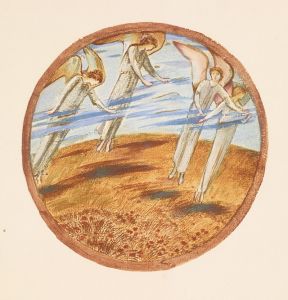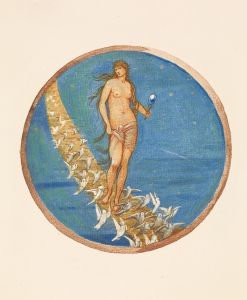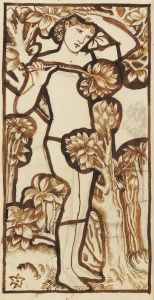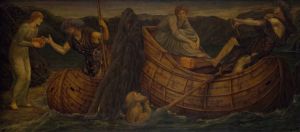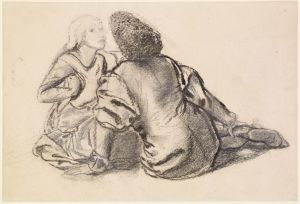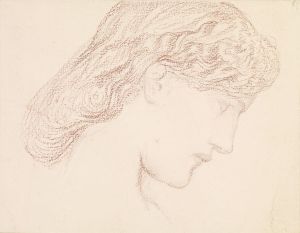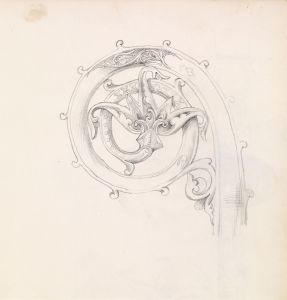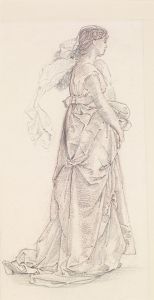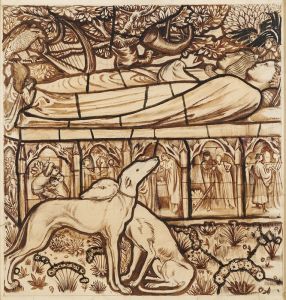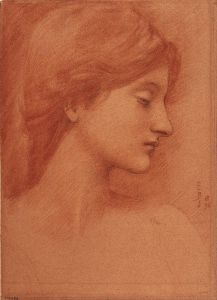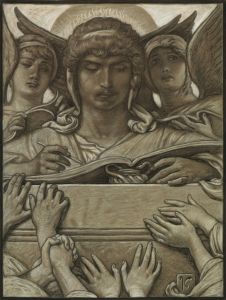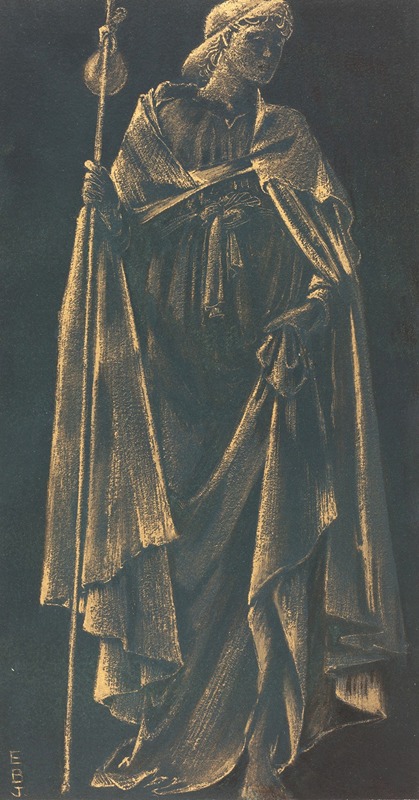
Angelus Ministrans
A hand-painted replica of Sir Edward Coley Burne-Jones’s masterpiece Angelus Ministrans, meticulously crafted by professional artists to capture the true essence of the original. Each piece is created with museum-quality canvas and rare mineral pigments, carefully painted by experienced artists with delicate brushstrokes and rich, layered colors to perfectly recreate the texture of the original artwork. Unlike machine-printed reproductions, this hand-painted version brings the painting to life, infused with the artist’s emotions and skill in every stroke. Whether for personal collection or home decoration, it instantly elevates the artistic atmosphere of any space.
"Angelus Ministrans" is a watercolor painting created by Sir Edward Coley Burne-Jones, a prominent British artist associated with the Pre-Raphaelite Brotherhood and later the Aesthetic Movement. The painting, completed in 1878, depicts a serene angel in a long, flowing robe, holding a censer, a vessel used for burning incense in religious ceremonies. The title, "Angelus Ministrans," translates from Latin to "The Ministering Angel," reflecting the spiritual and devotional tone of the artwork.
Burne-Jones was known for his meticulous attention to detail and his ability to evoke a sense of otherworldly beauty in his works. In "Angelus Ministrans," the angel is portrayed with a calm and contemplative expression, embodying the artist's fascination with themes of spirituality, mysticism, and the divine. The figure is rendered with delicate precision, emphasizing the ethereal qualities of the angel's form and attire. The use of watercolor allows for soft, luminous effects, enhancing the dreamlike atmosphere of the composition.
The painting is characteristic of Burne-Jones's style, which often drew inspiration from medieval art, mythology, and religious iconography. His works frequently feature elongated figures, intricate patterns, and a subdued color palette, all of which are evident in "Angelus Ministrans." The angel's pose and the drapery of the robe suggest a sense of timeless grace, while the inclusion of the censer underscores the connection to liturgical practices and sacred rituals.
"Angelus Ministrans" reflects Burne-Jones's broader artistic philosophy, which sought to create art that transcended the mundane and transported viewers to a realm of beauty and contemplation. The painting is an example of his ability to merge technical skill with a profound sense of emotion and spirituality.
The artwork is held in the collection of the Ashmolean Museum in Oxford, England. The museum, which is one of the oldest public museums in the world, houses a significant collection of Burne-Jones's works, along with other pieces from the Pre-Raphaelite and Aesthetic movements. "Angelus Ministrans" remains a celebrated example of Burne-Jones's contribution to 19th-century British art and his enduring influence on the visual culture of his time.







